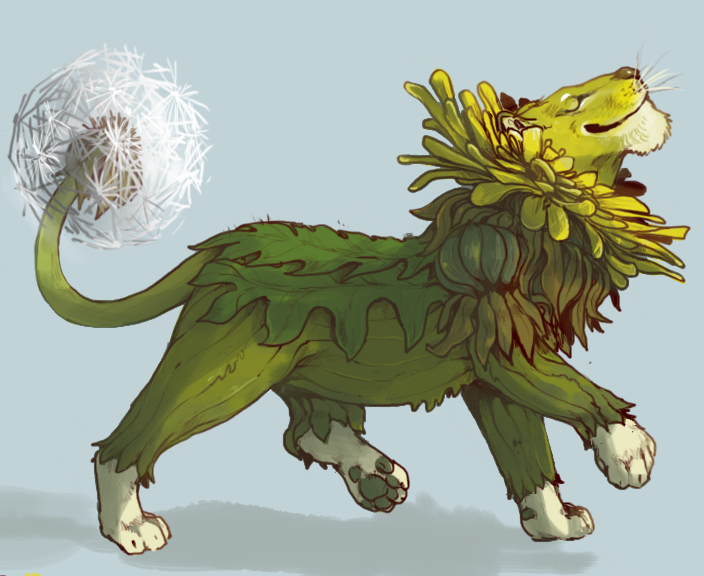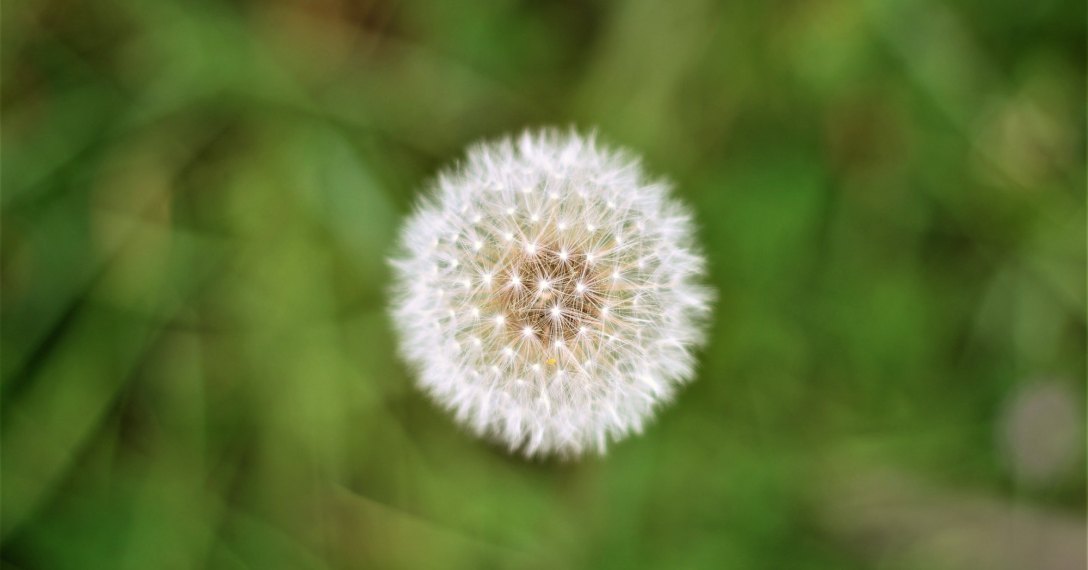 In the early 14th century, “dandelion” was spelled dent-de-lioun, literally “lion’s tooth,” a direct loan from French, but over time, colloquial use morphed it into the current spelling. Here’s an image of the leaf-shape to which the name refers.
In the early 14th century, “dandelion” was spelled dent-de-lioun, literally “lion’s tooth,” a direct loan from French, but over time, colloquial use morphed it into the current spelling. Here’s an image of the leaf-shape to which the name refers.
Regarding some of its other English names:
Tell-time refers to the practice of determining the time by picking mature white dandelions—called “blowballs” or, in the same vein, “clocks”—and blowing on the heads to see how easily the achenes (from Greek chainein, “to gape,” referring to the way the flower expands) or seeded fruits, will come off and float away. According to some folklore, it was thought that the number of puffs required to blow off all of the seeds would be the number of the hour.
Piss-a-bed (also pee-a-bed, wet-a-bed) is also a concept borrowed from French pissenlit. While dandelions do have some beneficial components—vitamins, iron, potassium and zinc—and have historically been used in various parts of the world as a diuretic (as well as a treatment for liver and gallbladder problems, kidney disease, upset stomach, skin problems, appendicitis, boils, fever, low appetite, and more), they are generally used more as an herbal supplement, and research into their medical uses hasn’t yielded firm conclusions. In some Italian dialects, the plant is also called pisacan, or “dog pisses,” because they are yellow and found along the edge of pavement where a dog might relieve itself.
Cankerwort refers to the way it spreads as a weed, similar to crabgrass. “Canker,” which now refers to spreading ulcers/sores, was originally a common English word for a tumor, from the Latin cancer, which also referred to tumors but literally meant “crab.” And “wort,” meaning “plant,” comes from the Old English wyrt (PIE root wrād- “branch, root”) and also appears in the names of the plants “ragwort” (ragweed), St. John’s wort, liverwort, mugwort, hogwort, etc.
Milk witch refers to the white liquid that’s produced when the plant’s stem is cut, plus the witchy claw-like leaves. It was also known as witch’s gowan, where gowan is a word for a marigold.
Irish daisy draws upon the mocking English use of the word “Irish” to mean “poor man’s [something]”, e.g., “Irish apricot” = potato.
Taraxacum officinale is the scientific name of the plant. Taraxacum perhaps comes from translations of medieval Person pharmacological texts by the scientist el Razi (or al-Razi) c. 900, and later scientist/philosopher Ibn Sīnā, who both called it tarashaquq. It also could be originally from the older Greek taraxos, “disorder” + akos“remedy,” but the earliest record of the term was a Latin translation of those Arabic texts in 1170 by Gerard of Cremona, so it was likely influenced by both. Officinale in this context meant “from the pharmacy.”
Additional English names include doon-head-clock, yellow-gowan, monks-head, priest’s-crown, faceclock, swine’s snout, white endive and wild endive.
Bonus: Here is an illustration of a dandy lion from an artist known as IguanaMouth.


